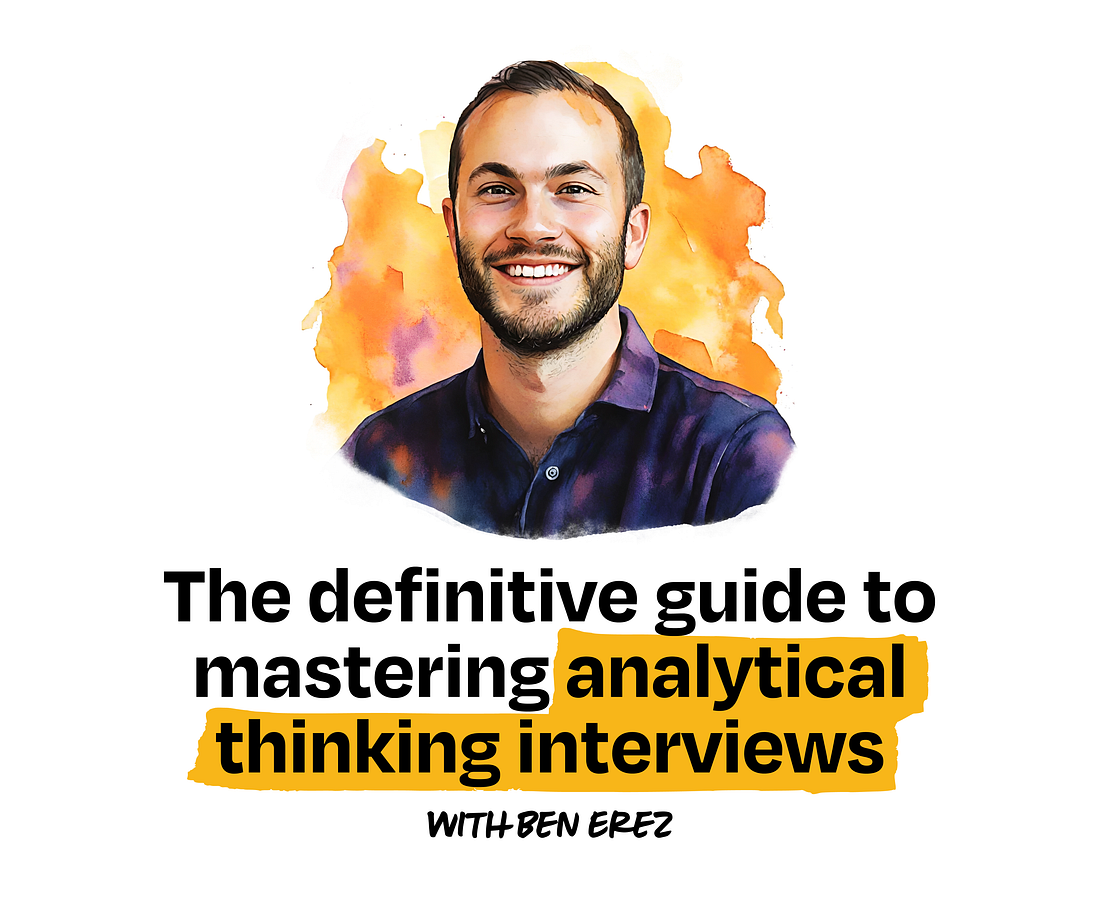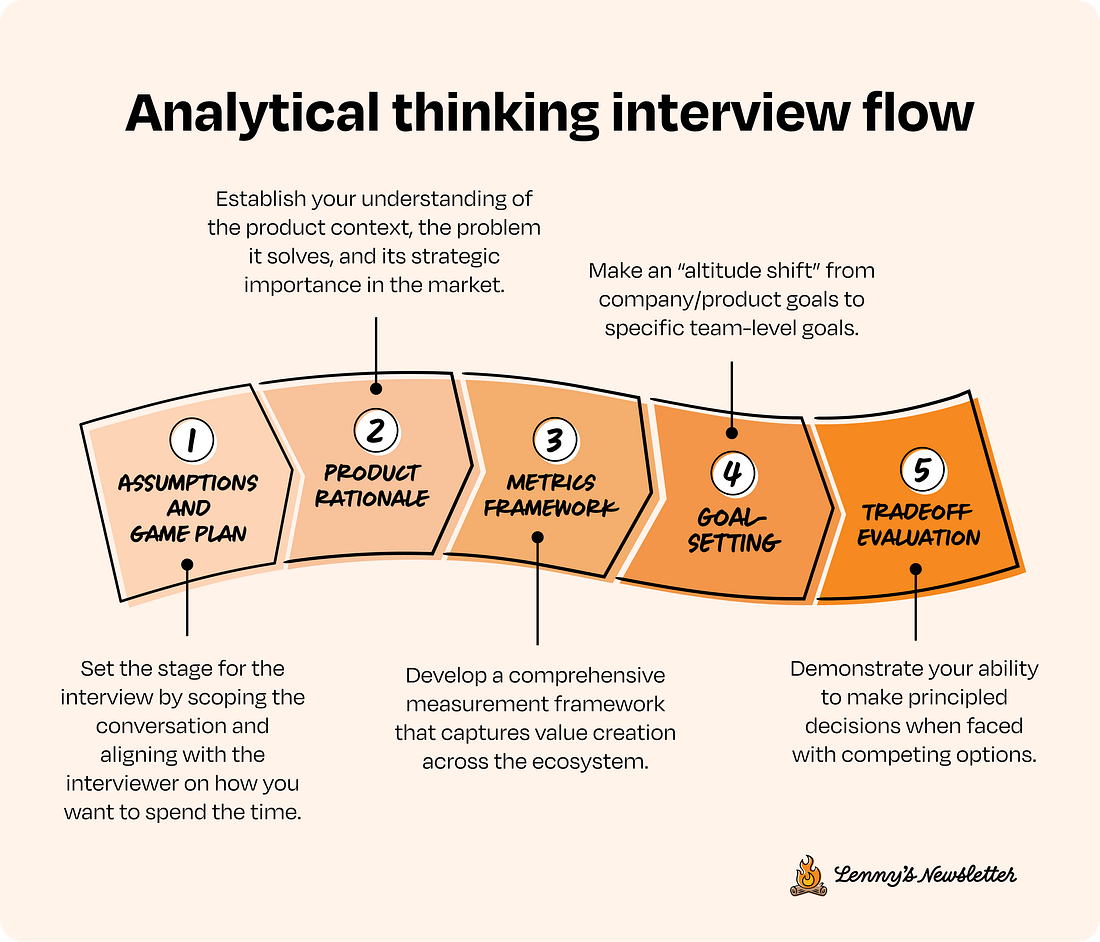|
The definitive guide to mastering analytical thinking interviews
A step-by-step prep playbook to help you ace your PM interviews
👋 Welcome to a 🔒 subscriber-only edition 🔒 of my weekly newsletter. Each week I tackle reader questions about building product, driving growth, and accelerating your career. For more: Lenny’s Podcast | How I AI | Lennybot | Lenny’s Reads | Courses | Swag
Annual subscribers now get a free year of Bolt, Perplexity Pro, Notion, Superhuman, Linear, Granola, and more. Subscribe now.
In my ongoing efforts to help you land your dream job, I’m excited to bring you this truly epic guide by Ben Erez. Below you’ll find everything you need to know to nail your analytical thinking interview—a staple of most product interview loops. I’ve never seen a guide this in-depth, specific, and full of so many real-life examples. I hope this helps them see exactly why you’re the perfect fit for the role.
After a decade in product (at Facebook, as the first PM at three different startups, and as a founder), Ben is now a full-time interview coach, helping PMs land their dream roles. He teaches a top-rated course on PM interviewing (use code “LENNYSLIST” to get $100 off), and on July 9th, he’ll be hosting a free 30-minute lightning lesson where he’ll show you how to use AI to practice for your analytical thinking interviews. Ben also co-hosts Supra Insider, a weekly podcast for the product community.
Bonus: You can now listen to this post in convenient podcast form: Spotify / Apple / YouTube.
In part one of this comprehensive guide—The definitive guide to mastering product sense interviews—I explained why product sense and analytical thinking interviews matter and I walked through my framework for acing the former. Now I’ll walk through my framework for acing analytical thinking interviews.
In this post, I’ll cover:
How to structure your answer to demonstrate the exact signals interviewers are looking for
Common pitfalls to avoid and how to navigate challenging scenarios
Practical preparation techniques to build your analytical muscle
Whether you’re actively preparing for upcoming interviews or you simply want to understand how top tech companies evaluate PMs, this guide will equip you with all the tools and frameworks you need to succeed.
We’ll start by exploring exactly what analytical thinking interviews assess and how they’re structured. By understanding the interviewer’s perspective, you’ll be better equipped to provide the signals they’re looking for.
Understand the analytical thinking interview
Analytical thinking (AT) interviews assess a candidate’s ability to understand a product in the context of its broader company and its market, establish metrics to track success, identify team goals, and evaluate tradeoffs in a structured way. Here are some examples of typical AT questions:
“How would you measure success for Spotify?”
“You’re a PM at Meta. Set a goal for Instagram Reels.”
“What should be the North Star metric for DoorDash?”
Although an AT interview normally lasts 45 minutes, you’ll have only about 35 minutes of actual working time after accounting for introductions and wrap-up questions. That might seem like plenty of time, but it flies by, so you’ll want to let your inner “time cop” run the show.
Since the interviewer won’t be looking for a “correct” answer—rather, they’re evaluating your thought process—I recommend approaching the interview with this linear flow to maximize your chances of providing strong signals for the following dimensions in a structured way:
Note: Analytical thinking interviews can sometimes include other question types, such as debugging/root cause analysis questions and estimation questions, but these are becoming less common. I included some thoughts about tackling debugging and estimation questions at the bottom of this post.
Step 1: Assumptions and game plan
The opening minutes of an analytical thinking interview can make or break your performance. I’ve watched countless candidates struggle because they jumped straight into goals without aligning with the interviewer on the structure.
My advice is to approach the interview as a game with clear rules rather than a casual conversation, and spend the first minute making a handful of assumptions at the start of the interview that narrow the scope to a manageable exe

